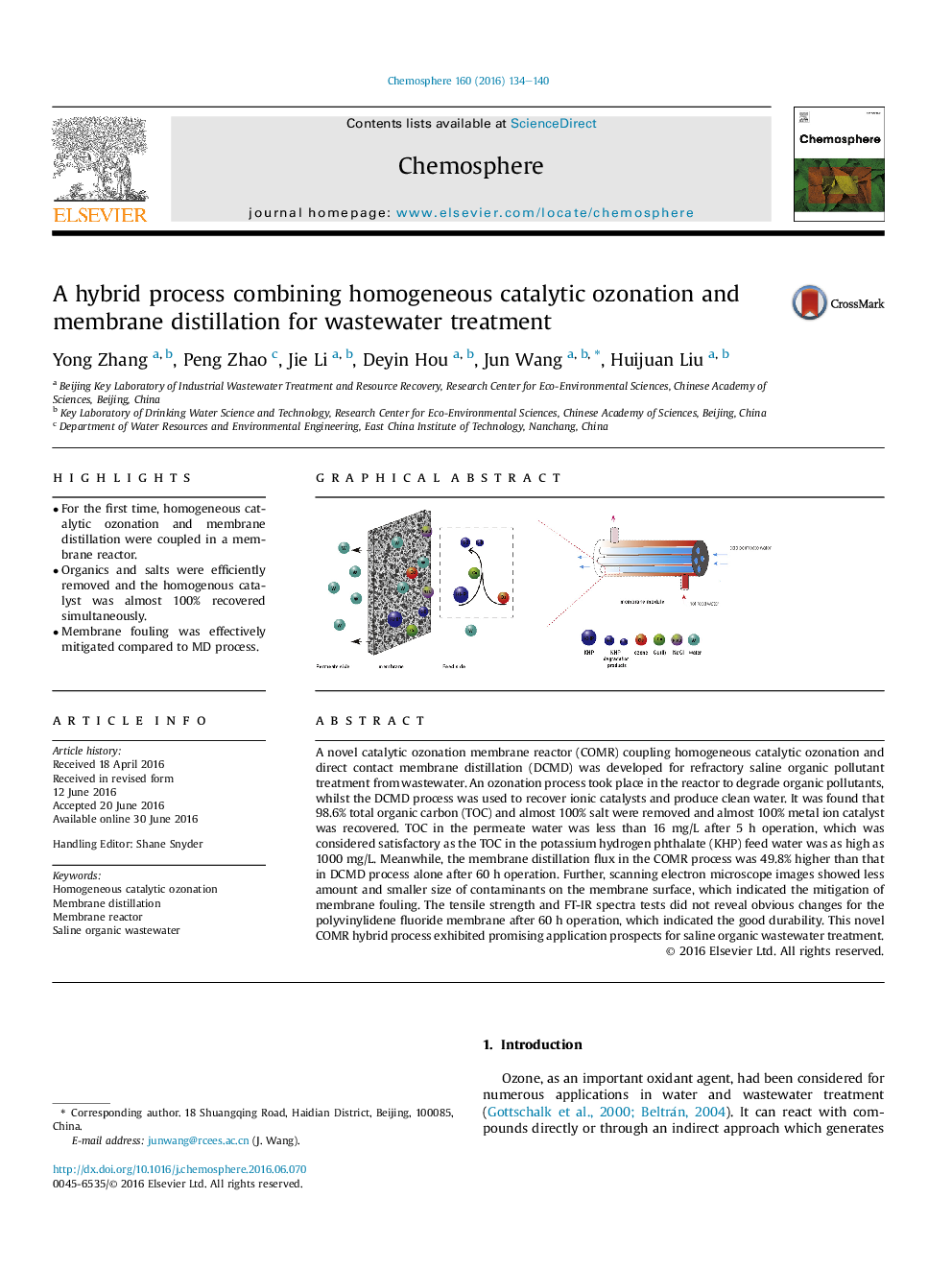| Article ID | Journal | Published Year | Pages | File Type |
|---|---|---|---|---|
| 4407392 | Chemosphere | 2016 | 7 Pages |
•For the first time, homogeneous catalytic ozonation and membrane distillation were coupled in a membrane reactor.•Organics and salts were efficiently removed and the homogenous catalyst was almost 100% recovered simultaneously.•Membrane fouling was effectively mitigated compared to MD process.
A novel catalytic ozonation membrane reactor (COMR) coupling homogeneous catalytic ozonation and direct contact membrane distillation (DCMD) was developed for refractory saline organic pollutant treatment from wastewater. An ozonation process took place in the reactor to degrade organic pollutants, whilst the DCMD process was used to recover ionic catalysts and produce clean water. It was found that 98.6% total organic carbon (TOC) and almost 100% salt were removed and almost 100% metal ion catalyst was recovered. TOC in the permeate water was less than 16 mg/L after 5 h operation, which was considered satisfactory as the TOC in the potassium hydrogen phthalate (KHP) feed water was as high as 1000 mg/L. Meanwhile, the membrane distillation flux in the COMR process was 49.8% higher than that in DCMD process alone after 60 h operation. Further, scanning electron microscope images showed less amount and smaller size of contaminants on the membrane surface, which indicated the mitigation of membrane fouling. The tensile strength and FT-IR spectra tests did not reveal obvious changes for the polyvinylidene fluoride membrane after 60 h operation, which indicated the good durability. This novel COMR hybrid process exhibited promising application prospects for saline organic wastewater treatment.
Graphical abstractFigure optionsDownload full-size imageDownload as PowerPoint slide
